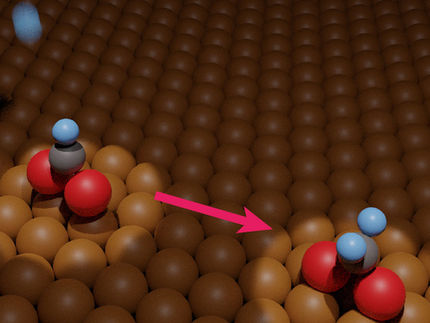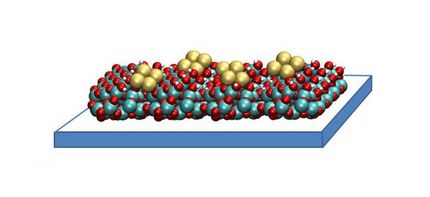Researchers make key step towards turning methane gas into liquid fuel
Researchers at the University of Washington and the University of North Carolina at Chapel Hill have taken an important step in converting methane gas to a liquid, potentially making it more useful as a fuel and as a source for making other chemicals.
Methane, the primary component of natural gas, is plentiful and is an attractive fuel and raw material for chemicals because it is more efficient than oil, produces less pollution and could serve as a practical substitute for petroleum-based fuels until renewable fuels are widely useable and available.
However, methane is difficult and costly to transport because it remains a gas at temperatures and pressures typical on the Earth's surface.
Now UNC and UW scientists have moved closer to devising a way to convert methane to methanol or other liquids that can easily be transported, especially from the remote sites where methane is often found. The finding was published in the Oct. 23 issue of the journal Science.
Methane is valued for its high-energy carbon-hydrogen bonds, which consist of a carbon atom bound to four hydrogen atoms. The gas does not react easily with other materials and so it is most often simply burned as fuel. Burning breaks all four hydrogen-carbon bonds and produces carbon dioxide and water, said Karen Goldberg, a UW chemistry professor.
Converting methane into useful chemicals, including readily transported liquids, currently requires high temperatures and a lot of energy. Catalysts that turn methane into other chemicals at lower temperatures have been discovered, but they have proven to be too slow, too inefficient or too expensive for industrial applications, Goldberg said.
Binding methane to a metal catalyst is the first step required to selectively break just one of the carbon-hydrogen bonds in the process of converting the gas to methanol or another liquid. In their paper, the researchers describe the first observation of a metal complex (a compound consisting of a central metal atom connected to surrounding atoms or molecules) that binds methane in solution. This compound serves as a model for other possible methane complexes. In the complex, the methane's carbon-hydrogen bonds remained intact as they bound to a rare metal called rhodium.
The work should spur further advances in developing catalysts to transform methane into methanol or other liquids, Goldberg said, although she noted that actually developing a process and being able to convert the gas into a liquid chemical at reasonable temperatures still is likely some distance in the future.
"The idea is to turn methane into a liquid in which you preserve most of the carbon-hydrogen bonds so that you can still have all that energy," she said. "This gives us a clue as to what the first interaction between methane and metal must look like."
Maurice Brookhart, a UNC chemistry professor, said carbon-hydrogen bonds are very strong and hard to break, but in methane complexes breaking the carbon-hydrogen bond becomes easier.
"The next step is to use knowledge gained from this discovery to formulate other complexes and conditions that will allow us to catalytically replace one hydrogen atom on methane with other atoms and produce liquid chemicals such as methanol," Brookhart said.
Most read news
Other news from the department science

Get the chemical industry in your inbox
By submitting this form you agree that LUMITOS AG will send you the newsletter(s) selected above by email. Your data will not be passed on to third parties. Your data will be stored and processed in accordance with our data protection regulations. LUMITOS may contact you by email for the purpose of advertising or market and opinion surveys. You can revoke your consent at any time without giving reasons to LUMITOS AG, Ernst-Augustin-Str. 2, 12489 Berlin, Germany or by e-mail at revoke@lumitos.com with effect for the future. In addition, each email contains a link to unsubscribe from the corresponding newsletter.




























































